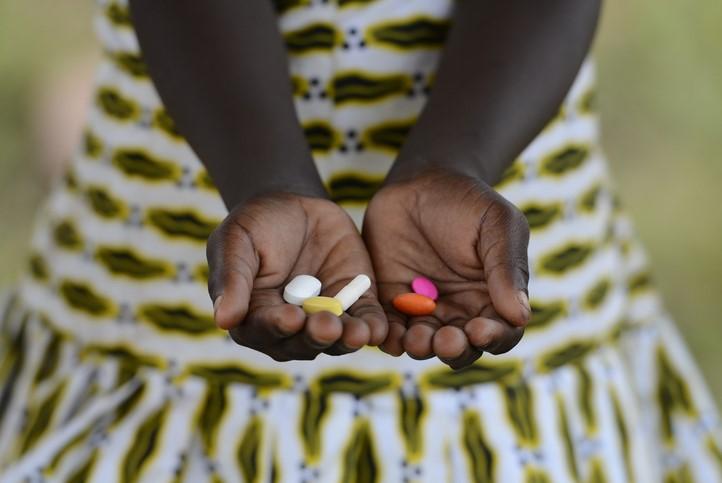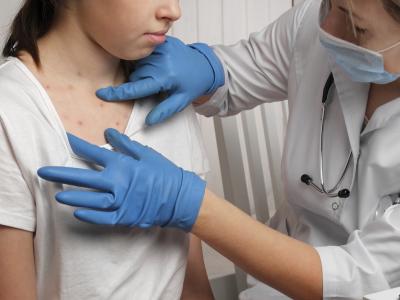Two studies this week in the American Journal of Tropical Medicine and Hygiene are addressing some of the questions raised by a study that has linked mass distribution of an antibiotic to African preschool children to reduced childhood mortality. But the answers remain elusive.
The studies are offshoots of the MORDOR (Macrolides Oraux pour Réduire les Décès avec un Oeil sur la Résistance) trial, a large randomized clinical trial that found that twice-a-year doses of azithromycin over 2 years to healthy children under the age of 5 was associated with a 14% reduction in childhood mortality in rural communities in Niger, Tanzania, and Malawi when compared with communities in which children received a placebo.
The results of the MORDOR trial, published in the New England Journal of Medicine in 2018, surprised the researchers, who thought they might see an impact on mortality but did not expect a 14% reduction. But they also raised concerns about whether mass distribution of azithromycin could promote antibiotic resistance and reduce the effectiveness of the drug.
The concerns about resistance were again raised when the researchers went back and looked at macrolide resistance in bacteria sampled from the children in Niger. That analysis found that the proportion of macrolide resistance Streptococcus pneumoniae isolates was significantly higher in children who received azithromycin than in those who received a placebo.
But in one of the new studies—another randomized controlled trial conducted in Tanzania in parallel to the original MORDOR mortality trial—investigators found that, when compared with bacteria sampled from children in communities that had received a placebo, four biannual rounds of azithromycin treatment did not appear to result in excess azithromycin resistance over 24 months of follow-up.
Questions about resistance remain
The trial, conducted by members of the MORDOR field study team in 30 communities in Tanzania, looked at the proportion of azithromycin-resistant S pneumoniae and Escherichia coli isolates recovered from the nasopharyngeal and rectal swabs of children ages 1 to 59 months in communities that had been randomized to receive four biannual distributions of oral azithromycin or a placebo. The samples were collected from 40 children randomly selected from the communities at the beginning of the trial, at 12 months, and at 24 months.
The analysis did not find an excess in the proportion of azithromycin-resistant S pneumoniae and E coli isolates in the children who received azithromycin, nor did it find an increase in resistance over time. The respective proportions of azithromycin-resistant S pneumoniae isolates in the azithromycin versus placebo arms at baseline, 12, and 24 months were 26.5% versus 18.1% (P = 0.26), 26.8% versus 16.5% (P = 0.29), and 13.4% versus 17.0% (P = 0.57). The proportions of azithromycin-resistant isolates of E coli at baseline, 12, and 24 months in the azithromycin versus placebo arms were 14.9% versus 18.9% (P = 0.16), 21.5% versus 16.6% (P = 0.10), and 14.9% versus 14.7% (P = 0.95).
"I don't know how to interpret it," said co-author Tom Lietman, MD, a member of the MORDOR study group and ophthalmologist at the University of California at San Francisco. "My gut feeling is whenever you do a trial, it's actually difficult to show a result, even if it is there."
Lietman and his colleagues say there could be several reasons why they found no increase in resistance. One is that the treated children represent only a small fraction of the randomized communities, and that the rest of the population in those communities may have had a reservoir of susceptible S pneumoniae and E coli strains. In addition, the mean coverage of communities in the azithromycin arm was 75% to 78%, which means that nearly a quarter of children in the azithromycin-treated communities didn't receive the antibiotic and likely had susceptible strains.
"Maybe the fact that a quarter of the children weren't treated allows this reservoir where the susceptible strains are doing just fine, and then they can repopulate the community pretty quickly," Lietman said.
Ultimately, the results provide little clarity on the big question raised by the MORDOR study.
"I don't think we have resistance figured out with periodic mass antibiotics," he said. "But I do think we're starting to understand the amount of resistance that will selected for by mass antibiotics."
Lietman said they've learned a few things so far. While mass distribution of azithromycin does select for antibiotic resistance, he explained, it appears to go away when the mass doses are stopped. In addition, they haven't observed dramatic increases in resistance to other antibiotic classes.
"If we treat with azithromycin and the penicillin resistance goes up, that would be a problem," he said.
Lietman also noted that the MORDOR trials haven't selected for as much antibiotic resistance as the trachoma prevention programs in Africa, in which azithromycin doses are distributed to entire communities to eliminate ocular strains of Chlamydia that cause the disease.
It's also still unclear why giving children under 5 azythromycin is linked to reduced childhood mortality. An analysis earlier this month of MORDOR results from Niger found that mortality from malaria, pneumonia, meningitis, and diarrhea in the azithromycin-treated communities were all down compared with the communities that received placebo, so it's possible the antibiotic doses could be having an impact on all those conditions. But that's not a satisfying answer for those who have concerns about mass distribution of azithromycin, Lietman said.
"If it was targeted to just one of those major killers, I think people might be more comfortable with the program," he said. "We're comfortable targeting individual diseases, but we're not comfortable giving antibiotics out non-specifically."
Optimizing the mortality benefit
Another question raised by the original MORDOR mortality study was whether mass azithromycin distribution should specifically target certain high-risk subgroups. That was highlighted by results showing that children ages 1 to 5 months in communities receiving azithromycin saw the greatest reduction in mortality (24.9% lower than in communities receiving placebo).
To see whether a targeted strategy might have an impact on the number of lives saved, Lietman and other researchers from the MORDOR study group went back in the second study and looked at mortality among three groups of children from 594 communities in Niger that received azithromycin or placebo: children aged 1 to 5 months, 1 to 11 months, and 1 to 59 months. Their aim was to estimate the number of deaths averted by azithromycin in those three groups.
What they found was that the number of deaths averted was among children ages 1 to 59 months (729) was nearly six times the number averted in the 1-to-5-month groups (126), and more than twice the number of deaths averted among the 1-to-11-month group (297).
"This suggests that a policy of targeted treatment would lead to fewer lives saved compared with mass treatment of all preschool-aged children," Lietman and his colleagues write in the study.
This is an example of the "prevention paradox," Lietman explained. Targeting a high-risk group to receive azithromycin may result in a higher effect per person—and in this case could hypothetically reduce the selection pressure for resistance—but treating a wider group of children would have a larger overall impact on mortality.
"Every time we try to target, we lose a bunch of kids who are also dying, even if at a lower rate," he said.
The next step in this research will be a larger trial in Niger, which aims to randomize all children under 5 in the country to receive azithromycin or placebo, one region at a time. That trial begins this summer.
See also:
May 2, 2018, CIDRAP News story "African study on pre-emptive antibiotics in kids spurs resistance debate"
Jun 6, 2019, CIDRAP News story "Follow-up study: Mass azithromycin still tied to fewer child deaths"























